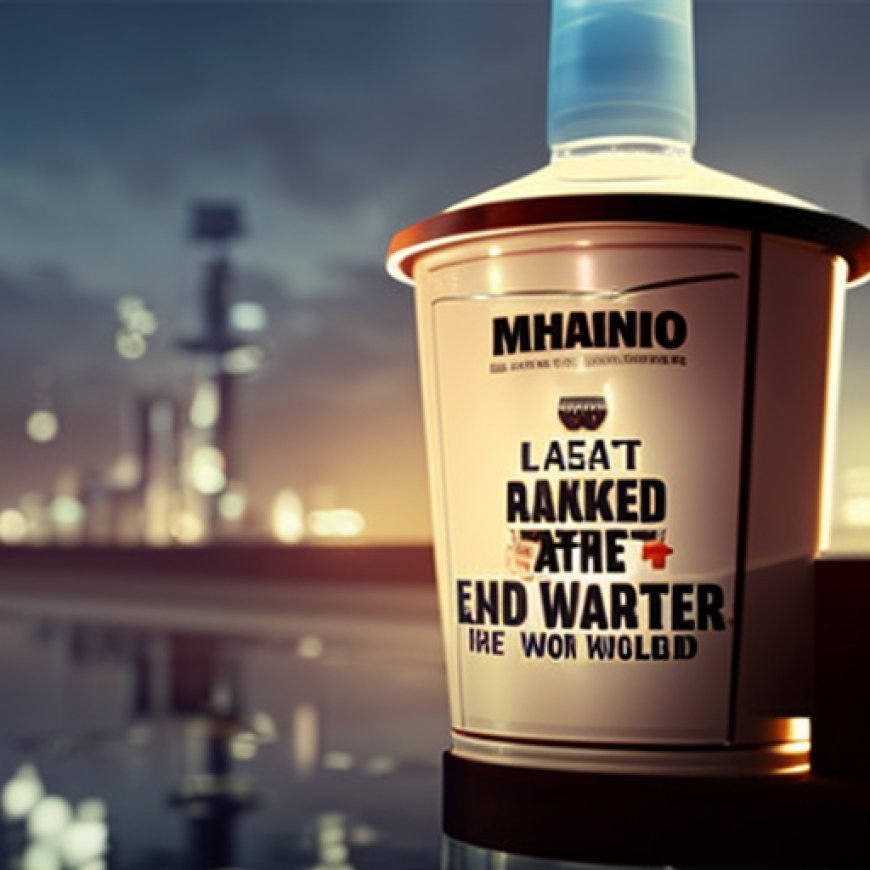Ranked: These countries have the least access to safe drinking water in the world, 2024 – CEOWORLD magazine
Ranked: These countries have the least access to safe drinking water in the world, 2024 CEOWORLD magazine


Access to Safe Drinking Water: A Report on the Global Situation
Introduction
The United Nations General Assembly recognized the right to sanitation and water as a fundamental human right in 2010. This means that every person in the world is entitled to adequate, uninterrupted, and potable water that is affordable and physically accessible for personal and domestic use.
The Importance of Safe Drinking Water
Despite the availability of water in most parts of the world, many countries face challenges in providing safe drinking water to their populations. The lack of access to safe drinking water has led to various health issues, such as gastrointestinal problems like diarrhea, fever, and vomiting.
Sustainable Development Goals (SDGs)
The Sustainable Development Goals (SDGs) set by the United Nations aim to address global challenges, including access to safe drinking water. Goal 6 specifically focuses on ensuring availability and sustainable management of water and sanitation for all.
What is Considered “Safe Drinking Water”?
Potable or safe drinking water is water that is not harmful to ingest through food preparation or direct consumption. It comes from various sources such as ground sources (aquifers, hyporheic zones) and surfaces (streams, rivers, glaciers). Safe drinking water undergoes sufficient treatment to meet federal and state quality standards for consumption, eliminating microorganisms, fecal matter, viruses, bacteria, and toxic chemicals. This helps prevent the transmission of diseases like polio, typhoid, cholera, diarrhea, and dysentery that are often caused by contaminated drinking water.
Countries with Inadequate Access to Safe Drinking Water
According to data from the World Health Organization, more than 2 billion people worldwide live in water-stressed countries. CEOWORLD magazine’s researchers have compiled a list of countries with insufficient access to safe drinking water:
- Papua New Guinea – 60% of the population lacks access to safe drinking water
- Equatorial Guinea – 52.10%
- Andorra – 51%
- Chad – 49.20%
- Mozambique – 48.90%
The Future of Safe Drinking Water Worldwide
Access to safe drinking water is crucial for public health and economic development. Efforts must continue to ensure that more countries achieve better access to potable water. This requires collaboration between governments, non-governmental organizations, private companies, and citizens to eliminate unequal access to affordable and safe drinking water.
SDGs, Targets, and Indicators
1. Which SDGs are addressed or connected to the issues highlighted in the article?
- SDG 6: Clean Water and Sanitation
2. What specific targets under those SDGs can be identified based on the article’s content?
- Target 6.1: By 2030, achieve universal and equitable access to safe and affordable drinking water for all
- Target 6.2: By 2030, achieve access to adequate and equitable sanitation and hygiene for all and end open defecation, paying special attention to the needs of women and girls and those in vulnerable situations
3. Are there any indicators mentioned or implied in the article that can be used to measure progress towards the identified targets?
- The percentage of the population lacking access to safe drinking water in each country mentioned in the table can be used as an indicator to measure progress towards Target 6.1.
Table: SDGs, Targets, and Indicators
| SDGs | Targets | Indicators |
|---|---|---|
| SDG 6: Clean Water and Sanitation | Target 6.1: By 2030, achieve universal and equitable access to safe and affordable drinking water for all | The percentage of the population lacking access to safe drinking water in each country mentioned in the table |
| SDG 6: Clean Water and Sanitation | Target 6.2: By 2030, achieve access to adequate and equitable sanitation and hygiene for all and end open defecation, paying special attention to the needs of women and girls and those in vulnerable situations | N/A |
Behold! This splendid article springs forth from the wellspring of knowledge, shaped by a wondrous proprietary AI technology that delved into a vast ocean of data, illuminating the path towards the Sustainable Development Goals. Remember that all rights are reserved by SDG Investors LLC, empowering us to champion progress together.
Source: ceoworld.biz

Join us, as fellow seekers of change, on a transformative journey at https://sdgtalks.ai/welcome, where you can become a member and actively contribute to shaping a brighter future.







